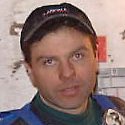
| |||||||
| |||||||
|
|
Middlesbrough - Still Hard to Bear
Edinburgh, Glasgow, Berwick, Newcastle and Workington - all Northern clubs and all current members of the Premier League. But one famous name is missing from this list, and has been since 1996 - The Middlesbrough Bears. We last saw the Bears in the dying days of the original Premier League. They had bravely battled through two seasons with low crowds and a weak side. It became apparent mid-season that the Bears were doomed, their Cleveland Park home caught the eyes of developers that wanted to extend the neighbouring college. The club limped on until the end of the season and bowed out with an emotional final meeting that attracted the highest gate of the season. This brought to an end an unbroken spell of 29 seasons of racing. A Middlesbrough (sometimes called Teeside) side were ever-present members of the National League and boasted many star names in their rather up and down existence. Throughout the seventies names like Tom Leadbitter, Bruce Forrester and Dave Durham entertained the thousands that flocked to Cleveland Park. The club's glory years were undoubtedly the 1980's when they were consistently one of the top sides in the league. The side featured riders such as Martin Dixon, Geoff Pusey, Mark Courtney and ,'Mr Middlesbrough' himself, Steve Wilcock. All of these were present in the legendary 1981 side that captured the National League title.
The side came close again in 1985 when they narrowly missed out to Ellesmere Port. This was the debut season of one Gary Havelock. 'Havvy' was an immediate success and would lift the World Championship only 7 years later. After that year things were never quite the same. A fire destroyed the main grandstand and the fans began to drift away. The late eighties saw riders like Daz Sumner, Mark Fiora and Jamie Luckhurst turning out in the red and white. The team was generally competitive and the fans were enthusiastic travellers. The nineties started well for the Bears. They were title challengers in the 1990 season, their strong side included Dave Cheshire, Rod Hunter and Paul Bentley. The next few years saw great change in the side. Steve Regeling was an excellent number one and riders like Brett Saunders, Paul Whittaker and Jens Rasmussen passed through. The club received a boost in 1994 when Paul Bentley, back on loan from Coventry, lifted the Division 2 Riders Championship. This was the last trophy that the Bears won. The years of the 'one big league' (1995 and 1996) were a struggle for the Bears. It proved difficult to attract top names to the North East and the club struggled along with a weak side. Undisputed number one was Shane Parker. Parker found a new maturity at Cleveland Park and established himself as a genuine number one. Parker's team mates included solid journeymen like David Walsh, Jesper Olsen and Scott Robson, promising youngsters such as Mike Smith and low quality imports like Martin Petarca.
By the end of 1996 Middlesbrough Speedway was no more. Promoter Malcolm Wright moved on to Sheffield, the riders found new clubs and the stadium was demolished to make way for the impending redevelopment. Only the fans and their memories remained. The redevelopment never happened, the site stands empty to this day, and the good folk of Middlesbrough were left without a Speedway team. The timing of the closure was particularly galling as the current Premier League was formed in 1997. This new league, with a heavy northern emphasis, was based on sensible costings and would have been perfect for Middlesbrough. The gates they were attracting in the original Premier League would have more than covered the new operating costs and the club would have thrived. The Premier League as a whole is poorer for their absence. A vibrant Middlesbrough would have provided excellent derby opposition for the other Northern clubs, particularly Newcastle, they would have offered the fans of other clubs increased variety and would have kept another seven riders in employment. The fans haven't given up and efforts continue to return the sport to Teeside. As always, the problem isn't a lack of will, it's a lack of money. The absence of an existing stadium makes the need for money all the greater. Let us hope that the Bears will roar again before too long. This article was first published in 2000
|
||||||
| Please leave your comments on this article (email address will not be published) | |||||||


